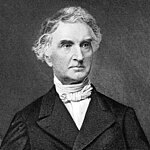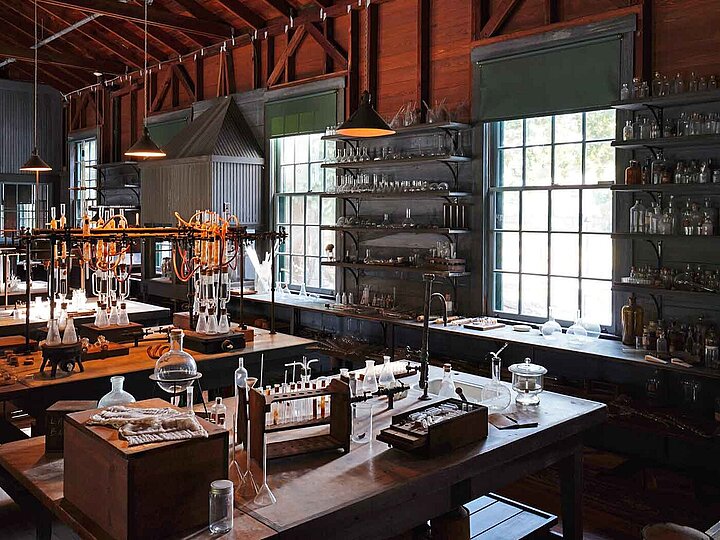The pioneers of elemental analysis - the beginnings
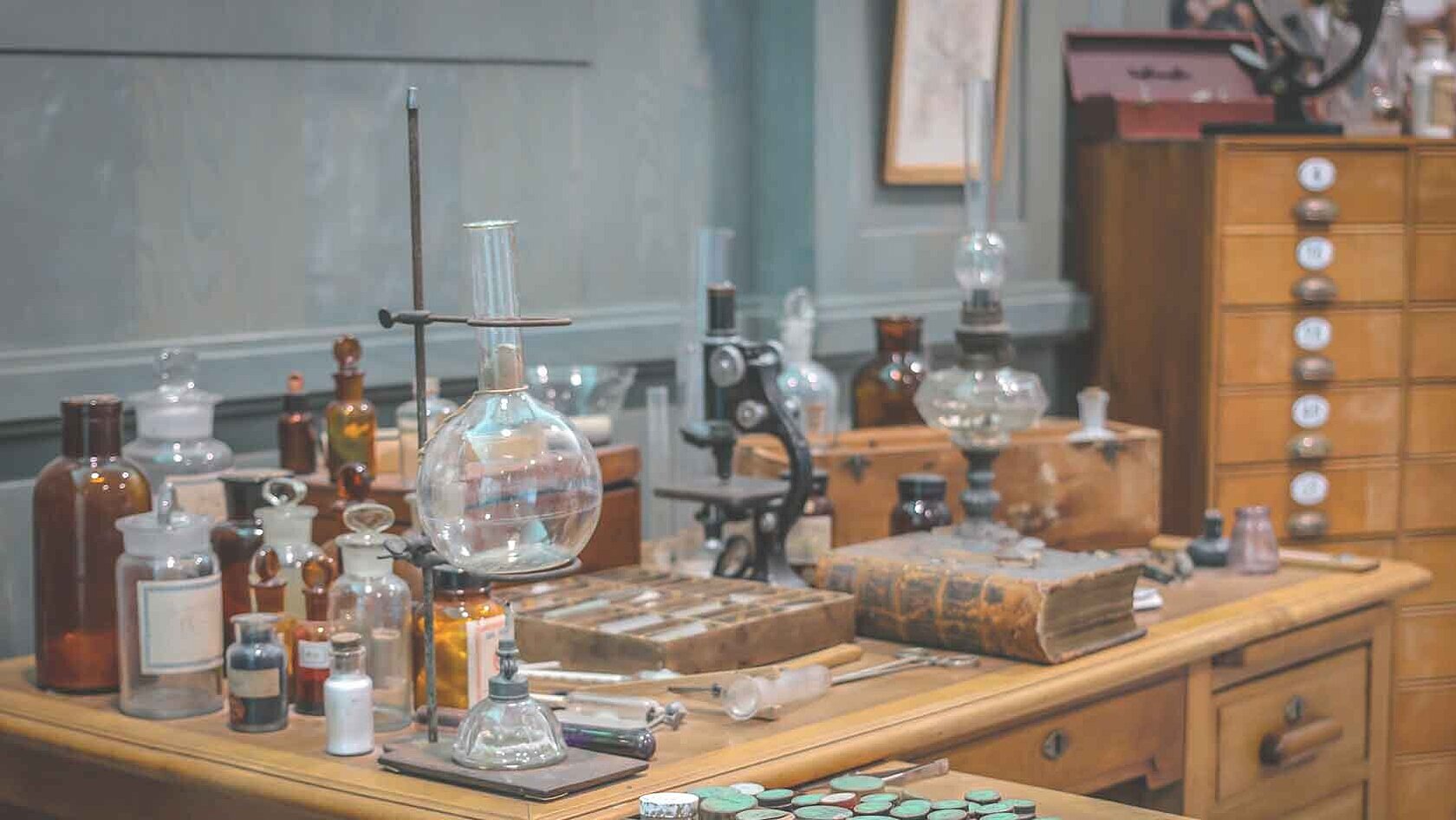
The famous chemist and scientist Justus von Liebig takes us on an imaginary journey back in time through elemental analysis and first looks back.
For many centuries, scientists have been seeking to determine the quantitative and qualitative composition of animate and inanimate matter. These pioneers’ thirst for knowledge prepared the ground for the field of instrumental elemental analysis. Elemental analysis influences our day-to-day lives – even though we do not really notice it. An important field of application involves the development and quality control of a diverse range of products, such as from the foods and pharmaceuticals sector, as well as metals used in vehicle construction. Moreover, elemental analysis can contribute to a clean environment by delivering an important decision-making basis for environmental and climate protection measures.
Instrumental elemental analysis has been around for 125 years, but the beginnings of this analysis method date back much further. I know that because I am one of the pioneers in the field of elemental analysis. Oh, I am sorry. I forgot to introduce myself: My name is Justus von Liebig.
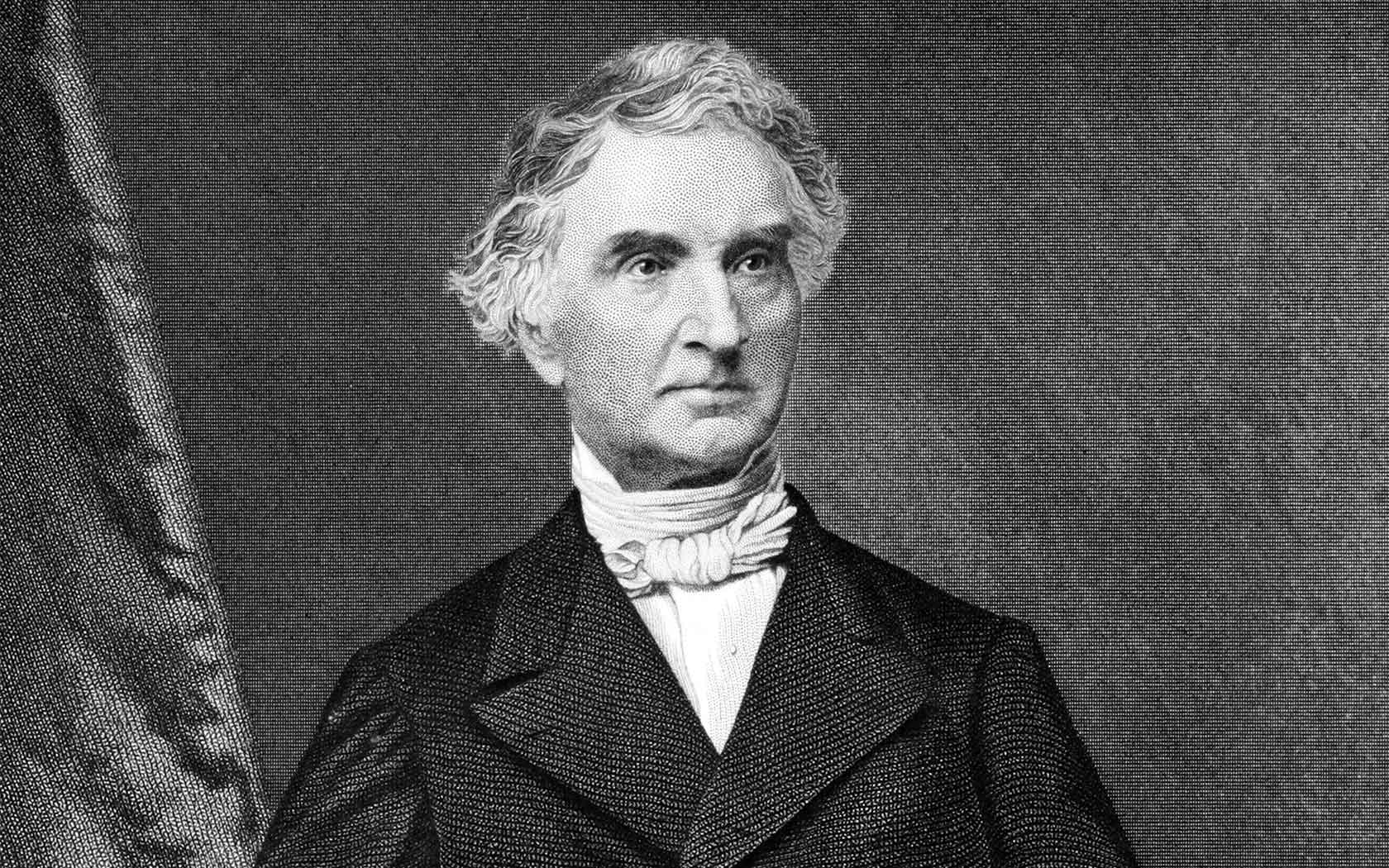
I was born in 1803 and worked as a chemistry professor in Giessen, Germany, from 1824 to 1852 before moving on to my own institute in Munich, where I lived and worked until my death 150 years ago at the age of 70. But my spirit lives on and watches how the world continues to develop. It is not without pride that I say that I was regarded as one of the most famous chemists and scientists of my lifetime, and I am often called the father of organic chemistry. I used my laboratory in Giessen for experimenting and teaching in equal measure, making me a pioneer of all branches of experimental research in the sciences. You can take a look at my laboratory to this day at the Liebig Museum in Giessen.
I humbly add that I am also responsible for an important milestone in elemental analysis, but I’ll return to that in a moment. Before my groundbreaking invention, there were other renowned pioneers that pointed me in the right direction. One of the first, chemist Robert Boyle (1627–1691), coined the term “chemical analysis.”
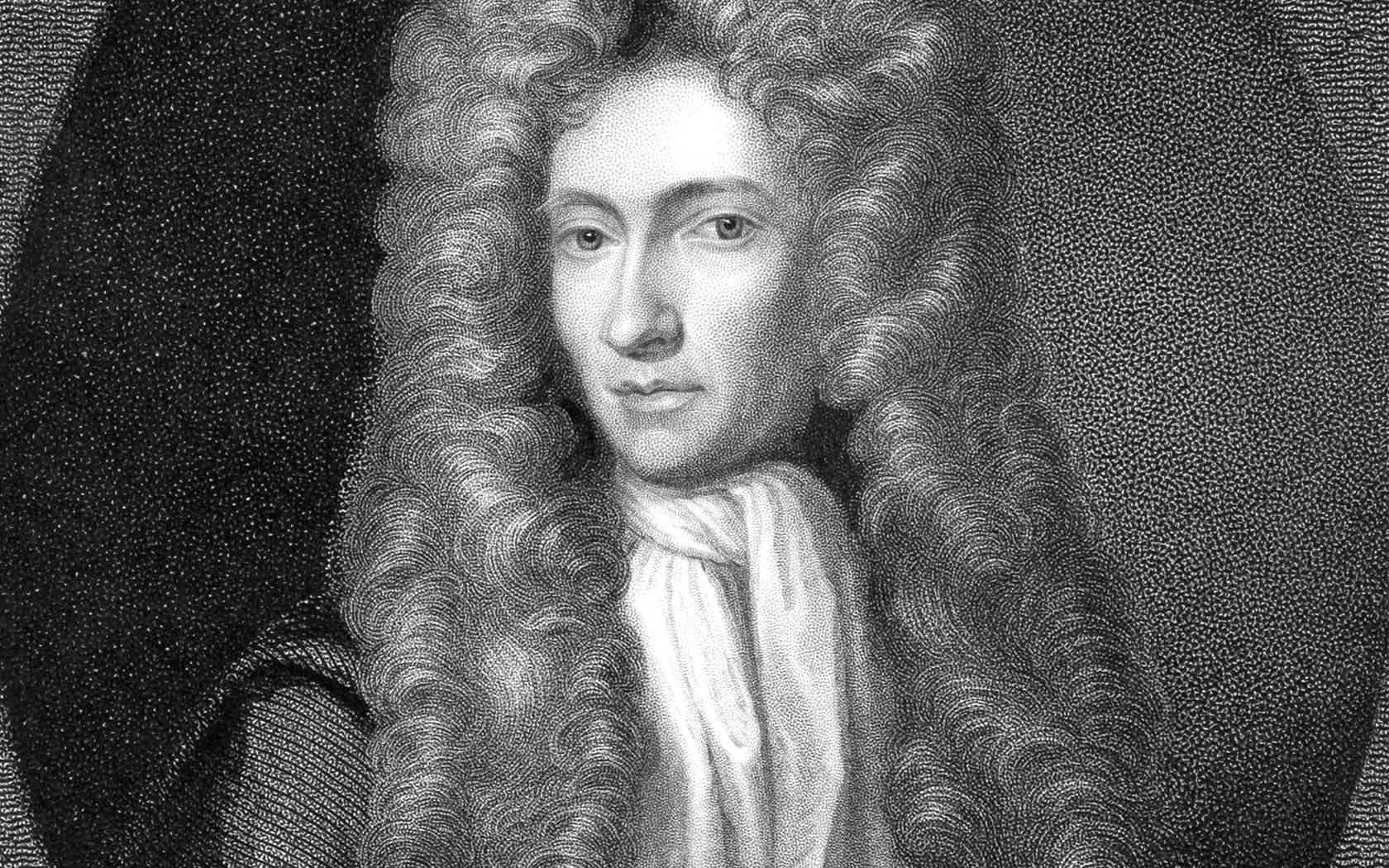
He loved to experiment and was thus one of the pioneers of chemistry as a science and of the chemical analysis itself. Around 100 years later, the chemists Antoine Laurent Lavoisier (1743–1794) and Joseph-Louis Gay-Lussac (1778–1850) laid the foundation for the principle of organic elemental analysis. To this day, this principle is based on combusting a sample followed by the qualitative determination of the reaction gases. Lavoisier, for example, analyzed waxes, oils and fats and discovered that all organic matter contained carbon, hydrogen and oxygen. However, the exact share of each of the elements remained a mystery.
The difficulties were so great that it was impossible for me to obtain exact quantitative results. I nevertheless proved unambiguously that oil transformed itself into water and carbon dioxide, but I could determine nothing about their proportions.
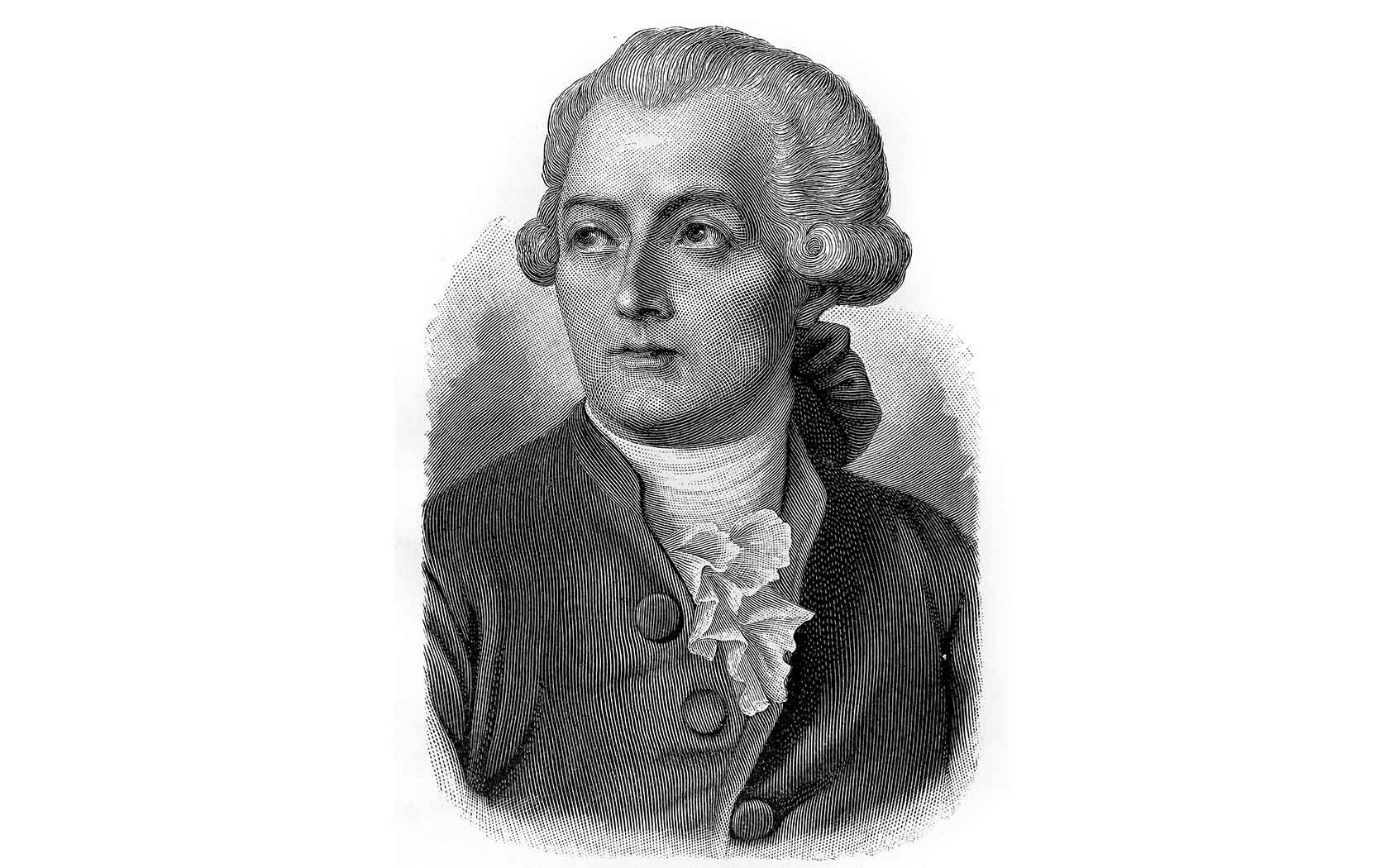
Jöns Jacob Berzelius (1779–1848) changed all of that. The Swedish chemist recognized that chemical synthesis paths for new chemicals can only be tracked in a targeted manner with the assistance of elemental analysis. He used a horizontally positioned combustion tube to combust the sample. This allowed him to heat the substance mixture more evenly, giving him more precise values. He used calcium chloride to absorb the water produced during combustion.
And then I came along. I took the elemental analysis method developed by Berzelius to the next level at my laboratory in Giessen. A key component was a glass device I developed in around 1830: the “kali-apparat” or five-bulb apparatus, used for determining the carbon content in organic substances. This allowed me to capture nearly all of the carbon dioxide generated during combustion with a concentrated potassium hydroxide solution and subsequently weigh it.
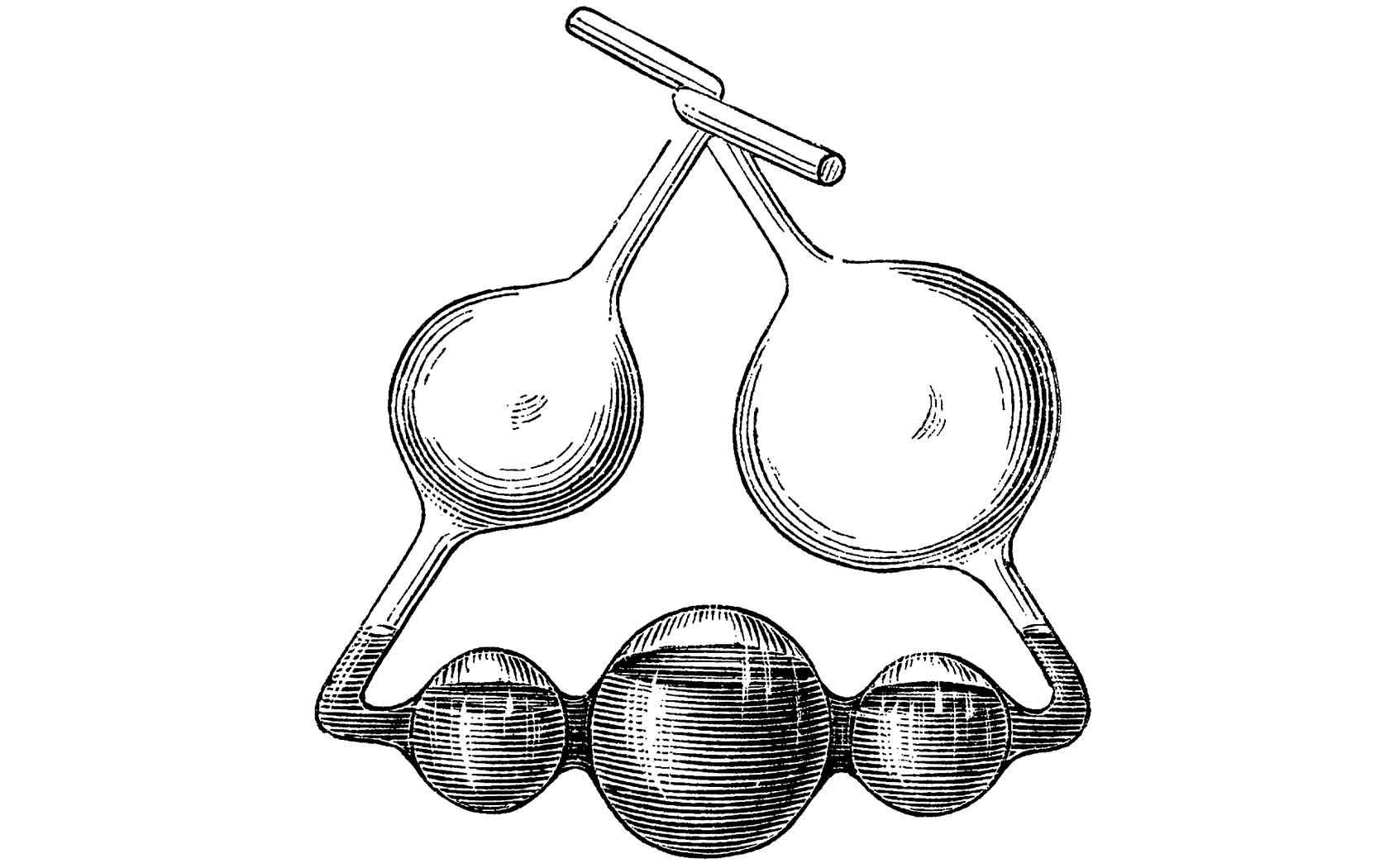
This innovation allowed me and my students to conduct far more analyses in a specific amount of time than Berzelius was able to do. This improved elemental analysis method made me the founder of organic chemistry, as the carbon and hydrogen in organic compounds could now be determined quickly and routinely. And it would have been impossible to determine the structures of organic substances without organic elemental analysis.
At the same time, Jean Baptiste Dumas (1800–1884) developed a method for determining nitrogen in organic compounds. However, this method could only be used in practice with Hugo Schliff’s (1834–1915) invention of the first usable azotometer for the volumetric determination of nitrogen.
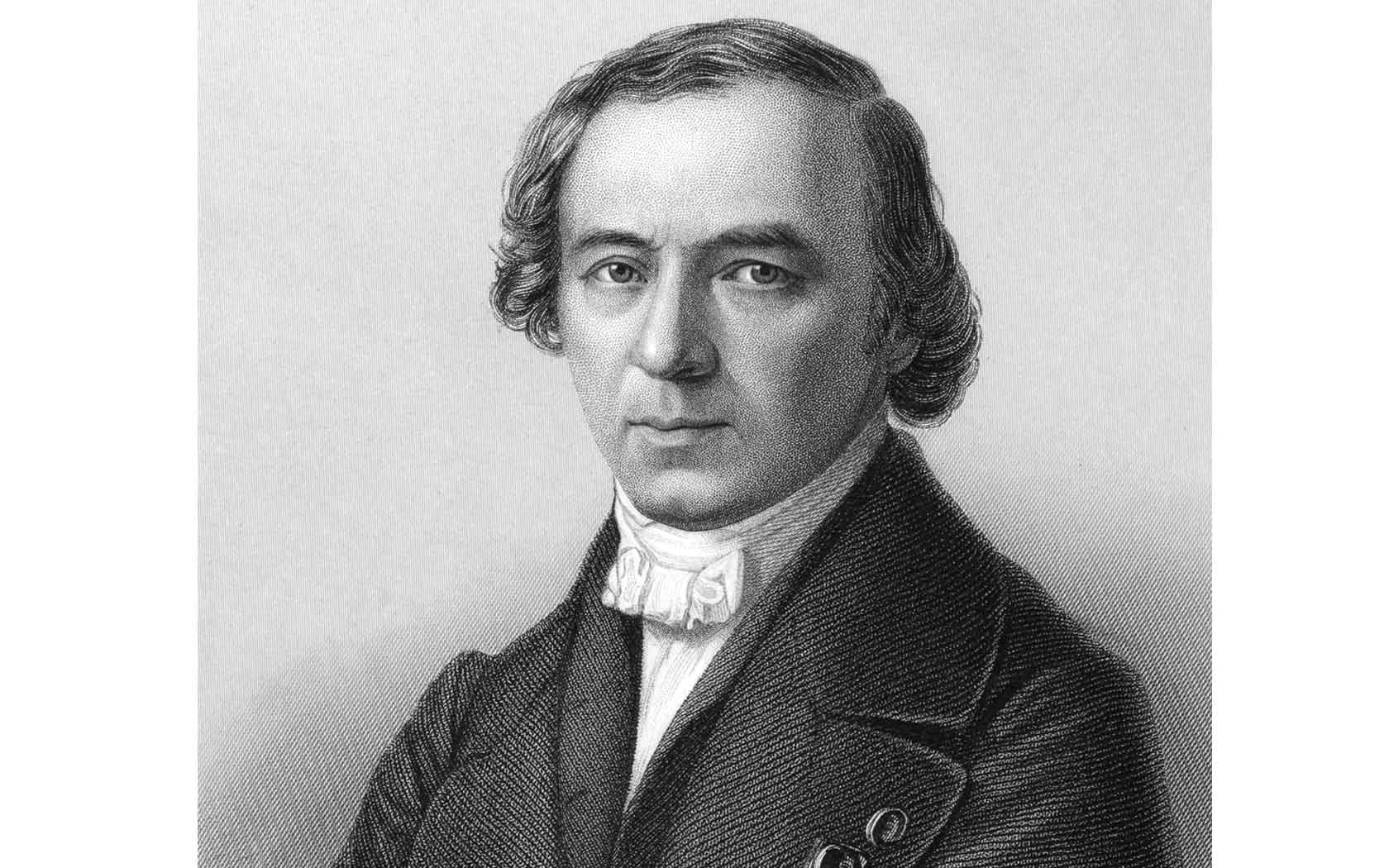
Of course, the progress of organic elemental analysis was by no means over with the invention of my five-bulb apparatus: However, this and the other innovations by the pioneers of elemental analysis created the basis for organic elemental analysis by combusting the sample and determining the main components of carbon, hydrogen and nitrogen. The method was progressively refined and perfected over the following years. But I’ll explain more on that when we meet again (see part 2 of this series).
You want to know more about the history of elemental analysis?
Our book "125 Years of Instrumental Elemental Analysis - A success story" offers you deep insights into the development of elemental analysis from the very first beginning up to latest trends nowadays. Which pioneers have laid the foundation for elemental analysis with their innovative ideas and research? How has elemental analysis developed from the early stage to an industrial produced technology? What is the technological platform that the method is based on and which applications can be covered? Which role have we as Elementar played in the development of elemental analysis? All these questions are getting answered in the book. Enjoy reading.
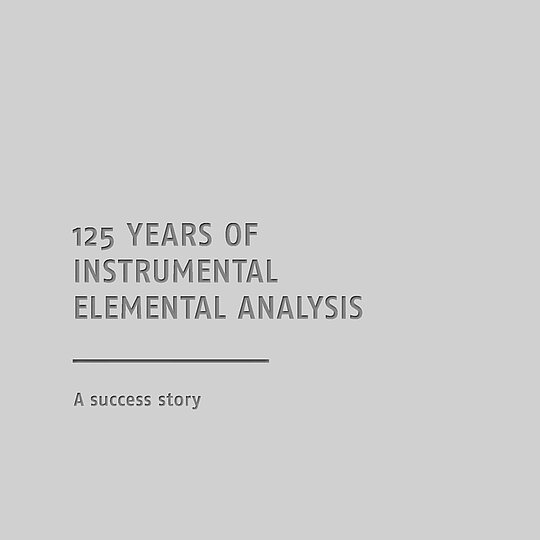
DOWNLOAD YOUR COPY
Fill in the form to receive your download link per e-mail.
Your contractual consideration for the free provision of the download is the subscription to our personalized newsletter. By clicking on the “download now” button, you therefore declare your acceptance of the receipt of personalized newsletters by e-mail by Elementar India Pvt Limited and its group companies as well as the evaluation of your user behavior in this regard and - if available - the merging of this data with your data in our customer database.
In order to receive newsletters from our group companies it is necessary to transfer your above-mentioned personal data to these companies. The data transfer is contractually required.
You are aware that the subscription to our personalized newsletter represents the contractual consideration that you provide for the free provision of the download. You can unsubscribe from the newsletter at any time with effect for the future. You can object to the future use of your data for advertising purposes at any time. For further information, please refer to our privacy policy.
Do not miss any new articles
NEWSLETTER
We will constantly publish new blog articles. Register for our newsletter to stay up-to-date and get informed about latest blog articles, news and trends.
